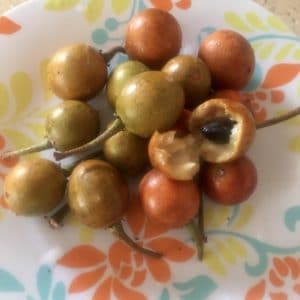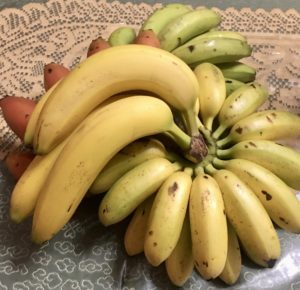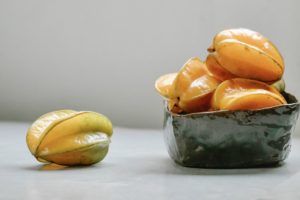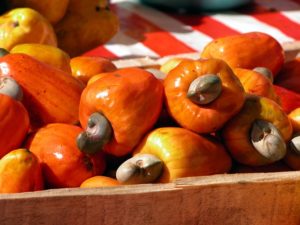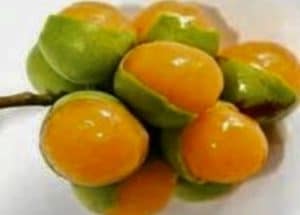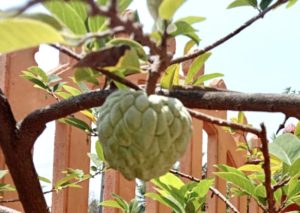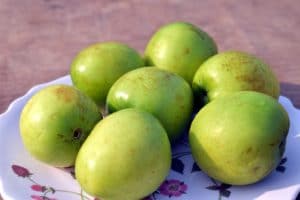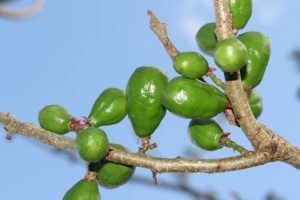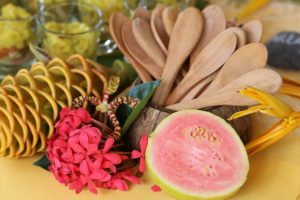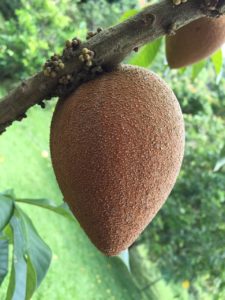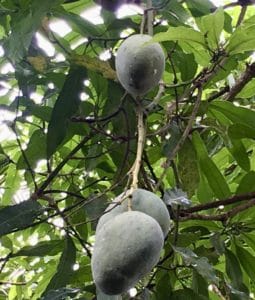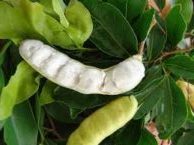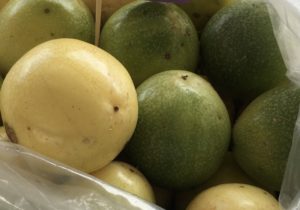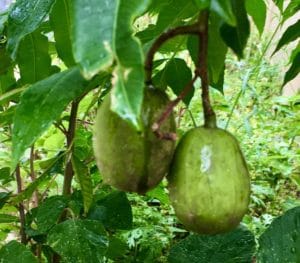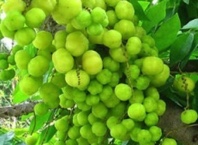Where Can I Get Exotic Fruits
List Of Rare Fruits Grown In Trinidad and Tobago
Discover a list of healthy fruits grown in Trinidad and Tobago a country rich in diversity ethnicity and culture, this list contains natural sweet mangos, papaya cherries , and exotics like Sapodilla, Star apple and Carambola to name a few which are packed with vitamins and minerals to add to one’s daily lifestyle.
a number of these fruits are used in the Keto diet
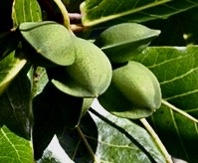 Almond Catappa/Terminalia Catappa
Almond Catappa/Terminalia Catappa
The almond tree is native to India and can grow up to 15 ft in height. The almond fruit has a crisp, sweet and acidic taste, and is used the world over.
The health benefits of consuming , almonds are Vitamin E, Protein, fibre, healthy fats, and magnesium.
Balata
The Balata tree can grow to 100 ft in height and is native to South Central, South America, and the Caribbean. The fruit skin has a thick orange, brown covering, eaten only when ripe and makes delicious smoothies.
In Trinidad and Tobago, the balata trees are protected by law and considered an endangered species on the extinction list. The sap is used for latex, rain guttering, golf balls, and temporary tooth fillings. The health benefits of Balata include: containing antioxidants which help to heal wounds and infections faster than normal.
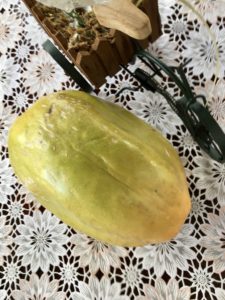 Barbadiane
Barbadiane
This fruit is grown on a vine, native to tropical America a species of the Passifloraceae family it can grow up to 50 feet in length, the fruit is oblong and turns yellow when ripe. The pulp is sweet with black seeds in a peach sack, used in ice cream and smoothies. health benefits are Calcium, Vitamin C, and Vitamin B3.
Banana
The banana plant is a perennial herb native to Southeast Asia and Africa. After completing its lifecycle, it dies and is replaced by a sucker plant. Bananas are grown in varieties, sizes, shapes, and tastes. Most turn yellow when ripe, while a minority remain green or burgundy.
Some varieties of bananas found in Trinidad and Tobago are Gos Michel , Chiquito Silk fig, plantain, and Moco. Bananas can be eaten raw when ripe or added to food dishes, desserts, smoothies, ice cream, or pizza, health benefits are fibre, potassium, folate, and vitamin C.
The Banga tree is a species of palm tree covered with thorns. Native to the Americas and tropical regions, the Banga fruit has a thick shell, is sticky but sweet, with a single seed, and is eaten only when ripe. The health benefits of Banga it’s rich in vitamin A, E, and K, and contains protein.
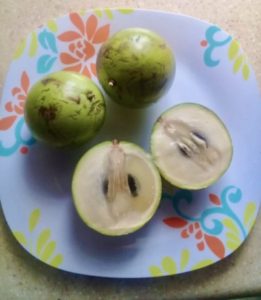 Caimet /Star Apple
Caimet /Star Apple
This tree, known as Chrysophyllum cainito, belongs to the family of Sapotaceae and is grown in Central America, West Africa, the Caribbean, and the Greater Antilles. the tree grow up to 100 feet in height, The leaves are brown and green with a rubbery texture.
These fruits are smooth, green when young, and turns purple when ripe. make a delicious milkshake or smoothie. health benefits include vitamins A, B, and C, as iron and calcium.
Carambola (Star Fruit)
Carambola is native to tropical Southeast Asia. The evergreen tree can grow up to 33 ft in height and is well known in the Caribbean as the star fruit or five fingers. Carambola fruit has a 5-point star shape and is yellow when ripe, grows in 2 colours or varieties: green and yellow, and is used as a garnish, in salads, foods, and desserts. Health benefits of carambola are fibre, potassium, and vitamins.
The cashew is an evergreen tree that originated in Brazil and was taken by the Portuguese to India, Africa, and the Caribbean. The tree can grow up to 40 ft. The leaf has a leathery texture. The cashew flesh is orange and yellow on the outside and has a sweet-tart taste.
The cashew nut is the seed found inside the shell. Cashew nuts are added to candies, cakes, smoothies, food, and desserts. The health benefits are rich in fibre, heart-healthy fats, protein, and mineral.
Guinep/Chennette/Spanish Lime
The Chenette tree is native to Latin America, the Caribbean, California, the Philippines, and Israel. Can grow up to 90 feet. The Chennette fruit is round with a green shell, tastes like a peach with a vanilla seed and has a sweet acidity taste. and the seeds are eaten as a snack when roasted.
In Trinidad, the chennette is mixed in smoothies, chow, a snack mixed in salt, hot chillies, Chadon-Beni, and garlic. health benefits Vitamins A, B, & C.
Cocorite/Attalea Maripa
The Cocorite tree is a palm species that is endemic to Trinidad and Tobago and native to South America. Eaten raw, this palm tree grows up to 115 ft in height, has a thick outer shell similar to a coconut, and is sweet and milky. The seed is long and black. The health benefits are healthy oils, Vitamin C, and E.
Custard Apple, Sugar Apple, Annona reticulata
This sugar apple seed was taken to India by the Portuguese and the Spaniards to the New World, South America, and the West Indies, where it can grow up to 20 ft in height. The fruit is green, milky, and sweet with a sugar texture, eaten when ripe, or added to smoothies and ice cream. The health benefits are protein, zinc, potassium, thiamin C, vitamin B’s, iron, and magnesium.
Dungs/Indian jujube/Chinese apple
Dungs, Indian Jujube, and Chinese apples originated from Central Asia, spread to North Africa, India, China, Malaysia, and Australia, and then became centralized in the Americas and West Indies. The dung tree grows up to 15 ft.
The dung fruit is mint green in colour with a glossy finish, has a single seed, and can be eaten green or ripe, Dungs provide health benefits of protein, and fibre, and are low in calories
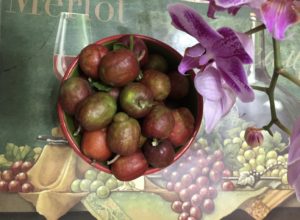 Governor Plum/Jacote (Spanish Plum)/Spondias Radlkoferi
Governor Plum/Jacote (Spanish Plum)/Spondias Radlkoferi
The Governor Plum tree originated in the Americas, Asia, Africa, and the West Indies and is a species of the cashew family flowering plant and can grow to 30 ft in height.
The plum turns red or maroon when ripe. In Trinidad, Governor Plum’s “chow” is made as a snack, which is a mixture of salt, hot chillies, and Chadon beni, similar to cilantro and garlic. The benefits of Governor Plum: Its health benefits are rich in vitamin A, B, and C and help the immune system.
Grapefruit family to Orange Fruit
The grapefruit tree is native to Asia, and English ships brought the seeds to the East and West Indies. The trees have been hybridized, a combination of different species of grapefruit, and can grow to 25 ft in height. The flesh is made up of segments that range in colour from pink to yellow. The taste is acidic and sweet and is used in a variety of drinks The health benefits are flavour condiments. Vitamin C Advantages: Boosts the immune system.
Common Green Plum
The green plum tree is native to Asia, Madagascar, and tropical America. This tree can grow up to 20 feet in height. The fruit is green and turns yellow when ripe, and has a fibrous seed. Green plums’ health benefits are high in vitamins A, B, and C, which help the immune system.
Guava, or Arawak guayaba
The guava tree is native to India and tropical America. It can grow up to 30 feet in height. There are many types of guava trees. Cayenne Guava is mint green in colour and has white pulp with a sweet taste that is used to make jams, jellies, smoothies, and ice cream. The health benefits of Guava: Vitamin A, B, C, and potassium.
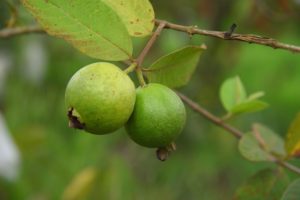 Common Guava, Psidium Guajava, and Detwiler Guava
Common Guava, Psidium Guajava, and Detwiler Guava
The common guava, or Psidium guajava, tree is native to India and Tropical America, can grow up to 35 ft in height, is dark green when ripe, and turns yellow. The seeds are white with a light pink flesh and are sweet with an acidic taste.
Detwiler guava is vibrant yellow with bright pink flesh and white seeds. This type can either be sweet with a slight acidity or sweet and acidic, as added in jams, jellies, smoothies, and ice cream. The health benefits of guava: vitamins A, B, C, potassium, and iron.
Guava , and watermelon are considered to be one of the lowest sugar fruits,
Introduced by the Portuguese in the 17th century and found in Western Africa, the Americas, and the Caribbean, the Hog Plum tree can grow up to 72 ft in height. The hog plum is green and turns bright yellow when ripe.
It is sweet, with an acidic flavour, and can be pickled, added to desserts, or sweet treats. When used in the proper mixture, the leaf aids in healing cuts and wounds. The powerful health benefits are iron, vitamin C, sodium, and magnesium.
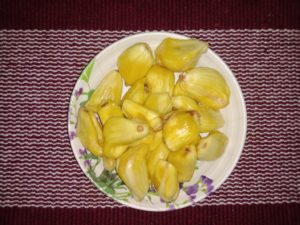
Koa/Jackfruit/Cowa/Artocarpus heterophyllus
The Koa is an evergreen fruit tree native to Asia, India, Malaysia, Vietnam, Laos, Cambodia, Southwest China, the Caribbean, and tropical countries, this tree can grow up to 80 ft in height.
The Koa fruit has segments and is eaten when ripe. It has a sweet taste with a fruity odour. The young seeds and flesh are cleaned and added to cuisine dishes. The fully grown seeds can be boiled or roasted to make a snack, which is considered a superfood. The health benefits include Vitamin C and protein.
Pouteria sapota/Mamey Sapote
The Mamey Sapote is an evergreen tree native to Mexico, Central America, the Caribbean, and Latin America. This tree can grow to a height of 145 ft. The fruit is brown with a thick covering.
The flesh is orange with a single large black seed and tastes of peach and apricot. The oil from the seed is used to support healthy hair and is added to smoothies, ice cream, and desserts, as well as jams, marmalade, and other food dishes when ripe. The health benefits of Mamey Sapote include vitamin B6, which is rich in vitamin C, potassium, and iron.
The mango tree is native to India and dates back to 2000 BCE (Before the Common Era) or BC (Before Christ). Mangoes were found in India by the Portuguese in 1498 and can grow to 100 ft in height with a radius of approx. 49 ft and live for over 100 years. This leaf is considered to contain medicinal properties.
The varieties of mangoes grown in Trinidad and Tobago are Douboux, Long Mango (Mango Vere), Calabash, Starch, Julie (shown in picture), Graham, Rose, and Turpentine.
The fruit is generally green or burgundy, and some can turn yellow when ripe. The skin is smooth, with a crisp texture and a sweet milky flavour.
The seed is not edible and is used in smoothies, cocktails, cuisine, desserts, candies, jams, jellies, pickles, eaten raw green or ripe, and the chow mixture of salt, hot pepper, and garlic, a favourite in Trinidad and Tobago. The health benefits are minerals and vitamins C and A, Mangoes are preserved and sold with other dried fruits.
Orange Fruits
Oranges are citrus that come in various species, varieties, and types. They are considered the world’s most popular fruit. The trees can grow up to 22 feet in height.
The types of oranges are navel, blood orange, mandarin, tangerine, and clementine, which vary in taste from sweet, acidic, and sweet. Acidic. The plant and fruit are used in beauty products, cleaning materials, boosting the immune system, etc. Oranges can be eaten raw, with chow (a mixture of salt, hot chillies, chadon-beni, and garlic) in drinks, food dishes, desserts, candies, marmalade, jellies, etc. health benefits Vitamin C, folate, potassium.
Poise Doux/Padu Fruit
The Padu Tree is native to South America and Polynesia and is grown in Trinidad and Tobago. This tree can grow to a height of up to 14 ft. Similar to peas in a pod, the fruit is larger and has a thick shell. The flesh is white and sweet and is eaten raw or can be used in smoothies. The health benefits of padu fruit are vitamins A, B, and C.
Passionfruit (Passiflora Edulis)
The passion fruit, or Passiflora Edulis, is native to southern Brazil, Paraguay, northern Argentina, and the Caribbean. The passion fruit grows on a vine, which can measure up to 30 feet long and turn yellow when ripe. The skin is thick and not edible, with many black seeds inside a yellow jelly-like coating that has a sweet, acidic, and tart taste.
It emits a strong fragrance when ripe, and the pulp is used to make smoothies, jams, jellies, and toppings for desserts. The health benefits of Iron, Vitamin C, and Fiber.
Papaya/Pawpaw
There are various types or varieties of pawpaw or papaya grown in tropical climates in Asia, Africa, the Americas, Mexico, the Caribbean, the USA, and Brazil. The papaw tree grows to a height of 26 feet.
The Pawpaw has a broadleaf. The skin is thick and smooth, and the flesh, according to the variety, can be either yellow, orange, or pinkish, with hundreds of tiny black seeds. The fruit turns yellow when ripe and is eaten raw or green, and is used in candies, jams, jellies, smoothies, desserts, food dishes, and beverages. Chow is a mixture of salt, hot chillies, chadon-beni, and garlic. health benefits: vitamin C, fibre, vitamin B.
Kerekel/Peach Palm & Peewah/Gulielma gasipaes/Pijuayo
The palm tree, Peewah, is native to the forests of Central and South America. It can grow up to 66 feet in height. Called the Pijuayo Peach Palm from Peru, Peewah is yellow and orange with a baby coconut at the core of the fruit. Boil in salt water to remove the skin and eat the flesh.
The kerekel is similar to the peewah; it is seedless and prepared similarly. health benefits are potassium, vitamin A, B, E, and K.
Pommecythere, or Golden Apple,
The Pommecythere, or Golden-apple, is native to Melanesia, the South Pacific Caribbean, and Asia. The Pommecythere fruit tree can grow up to 40 ft in height, and if grafted, can grow up to 3 to 4 ft in height.
The Pommecythere is green with leathery skin. The seed is fibrous. The fruit is crunchy with a sweet acidity taste. Used in pickles, food, condiments, candies, and chow (a mixture of salt, hot chillies, Chadon-beni, and garlic), the health benefits of Pommecythere, or Golden Apple, are Vitamin C, Fiber, and Iron.
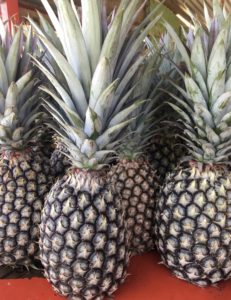 Pineapple/Sugar Loaf Pineapple
Pineapple/Sugar Loaf Pineapple
The pineapple is a tropical plant, the 2nd largest fruit production in Trinidad, with a particular strain of SugarLoaf Pineapple. An article was written in the Trinidad News Day (Patent the Pineapple) stating that this strain of pineapple is sweet, even when green. Some plants can grow up to 10 feet high.
The pineapple has prickly skin. The flesh is yellow and has a sweet taste. It is used in culinary dishes, cakes, candies, drinks, smoothies, pickles, or eaten raw. Chow (a mixture of salt, hot chillies, Chadon-beni, and garlic). Pineapple’s health benefits are high in antioxidants, enzymes, Vitamin C, B, and fibre, it is a Low Carb fruit to eat when on a Keto diet.
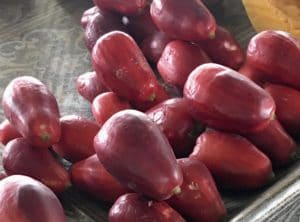 Rose Apple/Pomerac
Rose Apple/Pomerac
The Pomerac, or Rose Apple, is a species of fruit that is native to Southeast Asia, Asian countries introduced to the Caribbean, and other tropical countries.
This tree can grow to a height of 60 feet and thrives best in tropical climates. The Pomerac fruit has the shape of a pear and is a blend of rose-red and pink in colour. The flesh is pinkish and white with a brown seed at the core and has an acidic, sweet taste. Pomerac fruit can be eaten raw, pickled, or candied. health benefits include low calories, low carbohydrates, and vitamin A and C levels.
 Inca/Uguressa Flacourtia Roll Cherry
Inca/Uguressa Flacourtia Roll Cherry
The Roll Cherry tree is a fruit of the Flacourtia Incas tree, native to Africa, Asia, and the Caribbean. The cherry tree can grow up to 20 ft in height. When ripe, the flesh is light brown to purple, sweet with an acidic taste, and surrounded by tiny seeds.
The fruit is usually rolled and softened to enjoy the pulp, eaten raw, or used to make cherry wine, jellies, and preservatives. health benefits in Vitamins A, B, C, and Iron.
Sapodilla/Manilkara Zapota
The Sapodilla, or Manilkara Zapota, the tree is an evergreen tree native to Southern Mexico, Central America, Asia, and the Caribbean and can grow up to 26 feet in height.
The fruit has a thin skin that is light brown with oval-shaped black seeds and has a milky taste. used in smoothies and ice cream. health benefits of the Sapodilla-it contain dietary fibres, Vitamin A, B, and C.
Sour Cherry Phyllanthus Acidus
The sour cherry, or Phyllanthus acidus, is native to the Malay Islands and Madagascar. This shrub or tree can grow from 6 ft to 30 ft in height. The Sour Cherry is mint green and grows in big bunches or clusters, and is known for its acidic taste. It is eaten raw, or in a Chow (salt, hot chillies, Chadon-Beni, and garlic), Sweet Cherry, Pickle, or in food dishes. health benefits Protein, Vitamin C, fibre, calcium.
Soursop/Graviiola
The Soursop, or Graviola, is an evergreen tree native to the tropical regions of the Caribbean and the Americas that can grow up to 30 ft in height.
The fruit is green and prickly, milky white with black seeds. The taste of the pulp is a combination of sweet custard and jackfruit. When eaten ripe, this exotic fruit is used to make ice cream. Some of the benefits of soursop can be found in smoothies and desserts. health benefits are Vitamin C builds the immune system and promotes and protects healthy skin.
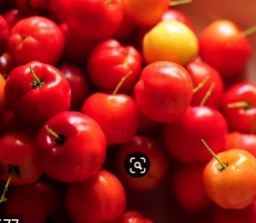 Exotic Sweet Cherry/Malpighia/Cerise
Exotic Sweet Cherry/Malpighia/Cerise
The Sweet Cherry and Cerise Cherry trees are native to Africa and tropical Asia and can grow to a height of 20 ft. The sweet cherry is bright red, with tiny seeds and sweet, and is used in juices, desserts, and foods. The health benefits are vitamin C and potassium.
Exotic tasting Tanko Bean
The Tanko Bean tree is native to the Orinoco Region, Central, North, and South America, also found deep in the Amazon, and grows to 98 ft in height. It is oval, brown, smooth, and sticky with a distinct aroma and exotic taste. The health benefits Vitamin D, C, K, and minerals.
Watermelon – Low Carb Fruit on a Keto Diet
The exotic watermelon, cultivated since ancient times, is indigenous to North-East Africa and grown around the world. It is a vine plant of the Cucurbitaceae family and can grow up to 20 ft in length.
The watermelon skin is green, smooth, thick, and oval or round, and is red or pink with black pits or seeds. It is sweet and has a watery, sugary texture, watermelon health benefits include vitamin A, lycopene, and calcium, antioxidants and contains 46 calories per dice cup, one of the low carb fruit used in the Keto Diet
Summary
The best healthy fruits , or fruits and vegetables to consume daily are mangoes, pawpaw, oranges, guava, pineapple. and the kiwi fruits not listed above. to name a few, A delicious part of a plant grown in a variety of vibrant rich colours which are nutritious to sustain a healthy lifestyle.
the Healthiest to consume from this list above are cherries , mangos, pineapple to name a few.
Disclaimer:
The information provided on this website is not to be taken as professional medical advice and is for educational purposes only. This site contains affiliate links to Keto Meal Plan and Interment Diet
Article
